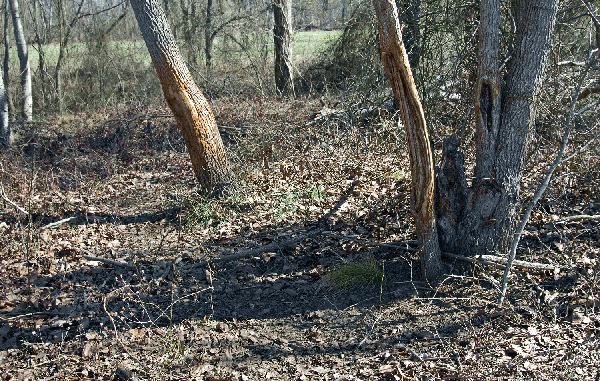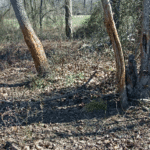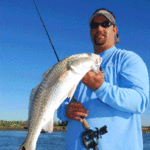
Garmin BaseCamp software
Dear Capt. Paul:
I hunt public property, and use my Garmin Oregon 450t constantly. I have the map provided from the management area pamphlet overlayed on my unit, but only main trails are shown on it.
After a few years of scouting, I finally have every trail possible on my GPS saved as tracks. I remember what I named each track, but I share these with my dad. I would like to clean these tracks up and combine them all so that there is one ‘squiggly line’ representing the trails of the entire piece of property.
I am using BaseCamp to manage all of my GPS data. I’m having a great deal of trouble creating one continuous track.
My first issue is that the software uses a ‘directional sense’ of which way you were walking when it recorded the track. I am aware that directions can be inverted, but this feature doesn’t always solve my problem when it comes to combining tracks.
My second issue is that it appears that you cannot combine one track to a midpoint of another track. Only end points can be connected.
Is there any way to resolve these problems I am encountering in BaseCamp? If not, I am willing to use other software, etc., to accomplish this.
Thanks,
BasinBuzz
Capt. Paul’s response:
The Garmin Oregon 450T is a very nice unit. It should serve you well into the future. The BaseCamp software will certainly do, but you will need a little explanation.
I will answer your question, but first let me explain how to get the most out of your GPS unit while using the FREE Garmin BaseCamp (www8.garmin.com/support/download_details.jsp?id=4435) data transfer software.
As you noted, the GPS is capable of guiding you to your various hunting or fishing locations by satellite navigation with an accuracy of within 10 feet. It sure beats following marking tape or reflector thumb tacks to get to your stand, but it needs to be used properly.
Following Trails or Bread Crumbs, as some manufacturers call the trail feature, is not designed to be used over and over again in negotiating to a specific location. To get a better understanding ,you should know the difference between waypoints, tracks and routes and how to use them.
Waypoints
Waypoints are positions stated in whatever position format (as Garmin calls the locations) or location or grid format (as some other manufacturers call the setting) for a particular location on the face of the earth. They are usually stated in latitude~longitude, but can be in several other grid formats.
Ways to enter a waypoint into your GPS unit
These waypoints can be entered by having the GPS at a location and save or mark the location. This will allow the GPS unit to capture the position where the GPS is located and store it as a numbered waypoint. The unit will save the waypoint as a sequential-numbered waypoint and continue for each position.
Your unit can hold up to 2,000 waypoints, but you would not want a series of numbers from 0001 to 2,000 in your unit. Remember that it is saved as a numbered name, such as 009.
I recommend that you rename the numbered waypoint to an alpha-numeric name that is something similar to the name of the location where you are located. For instance, a waypoint that is around a creek named Sandy Creek could be named Sand 1 and another named Sand STND for a Sandy Creek stand. They can be renamed in the GPS unit or at a later time in the BaseCamp program.
These waypoints can be captured as stated above, entered manually by entering the specific coordinates in the GPS unit and/or by downloading them from the BaseCamp data transfer program. However, it is much easier entering the waypoints by a mouse click or using the keyboard in the BaseCamp program and then transferring the waypoints to the GPS unit than trying to enter each waypoint directly into the GPS unit.
The Captain Paul’s Fishing Edge of GPS Waypoints (available by clicking “Waypoints” at www.shopsportsmanstore.com) is a program that is loaded into the BASECAMP software and transferred to the GPS unit. A hundred or so waypoints can be so transferred in a matter of a minute.
Routes
Routes are made of a series of two or more waypoints connected in series via a course or bearing line from one waypoint to another. The Garmin Oregon series of GPS units can store up to 200 routes with an almost unlimited amount of waypoints per route up to the 850 MB of available memory.
You MUST have at least two waypoints already saved in the unit or in your BaseCamp data transfer program to make a route from your waypoints.
However, the Oregon unit can configure a route while you are on the course or trail by selecting the ROUTE PLANNER >< CREATE ROUTE and Select the First Point (waypoint) to begin making a route while under way. See the complete instructions on pages 14 and 15 of your Owners Manual.
Routes allow you to use the GPS unit to follow a course. When navigating a route, the GPS unit will give you a heading, course and distance to the next point in the route. By having turns marked as waypoints in a route, the path or course is determined by the GPS unit. It lets the GPS do the “figuring which way to go” instead of trying to walk the path while looking at your GPS unit. It is much easier walking for 200 feet at a bearing of 30 degrees than trying to follow a faint track trail on the screen of the GPS unit while walking in the woods.
Tracks
Tracks are a recording of your path as per the setting you select in your GPS unit. You can select Distance, Time or interval and Auto settings. These settings let you configure the active track in a way that will be the most advantageous for your type of activity. Most users use the default Auto setting that allows the unit to select when to record the position.
Your unit can store up to 10,000 points in up to 200 saved tracks. The unit does NOT give you any guidance or navigation tools when trying to rerun a recorded track. You are on your own to attempt to negotiate the course by viewing the track points and attempting to duplicate them during your present course.
Herein lies the deficiency in using a track to get to your destination. As you maneuver over the track, your present track broadens the existing track line, and as you can never exactly travel over the existing track line, the track becomes broader and broader, sometimes covering the body of water you are traveling.
I have had questions about a track line completely covering a bayou that the user was trying to travel. And on the land trail, traveling by foot could cause you to completely cover the topographical features on your map.
I recommend that users clear all tracks when leaving the dock or point of embarkation that day and later convert those days’ courses that were recorded as a track to a ROUTE.
After saving each of the tracks separately and downloading them into your BaseCamp software, you can easily make a route of the existing track. Using the BaseCamp “New Route” tool found in the toolbar, click over the existing recorded track from the start to the finish that you will later navigate. Then name the route using an Alpha-numeric designation, save it as a leg of your trip.
To specifically answer your question, you can use the BaseCamp software to separate tracks, or routes, by opening the existing Library file where they are located and one at a time create a new track or route over an existing path and saving that one track or route to a separate file.
You would have to do this for each track or part of a track that you want to make. For each new track or route, open the main file, remark the new track and or route and save that new part to a separate file.
The New Track icon is shown in the toolbar as footprints. You can use it to mark a new route, saving it as stated above.
Yes, there are more-sophisticated mapping and data transfer programs that will do the job a little easier, but they will set you back about $300 plus.
The free BaseCamp program will do the job.
Capt. Paul




